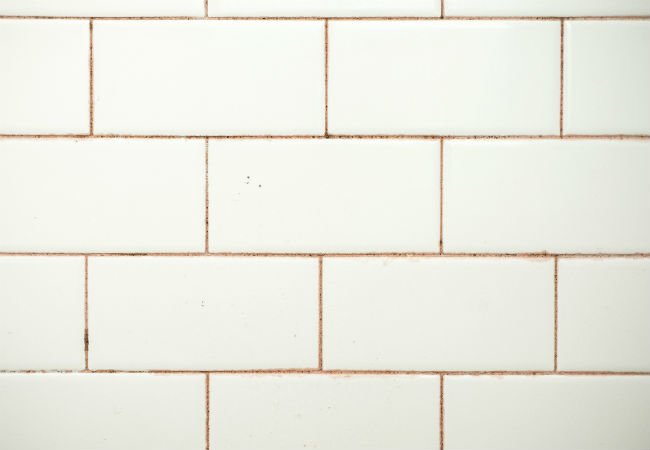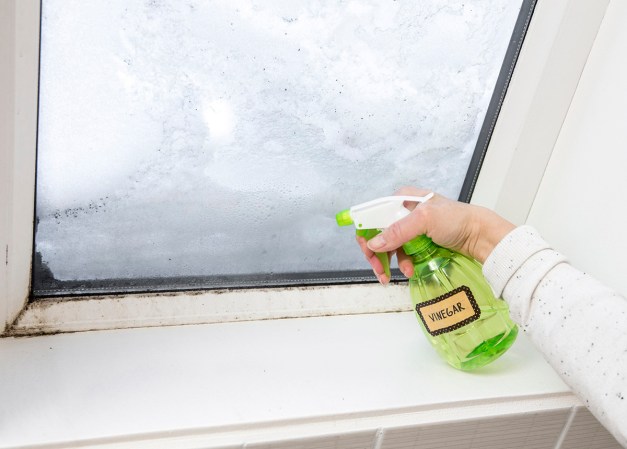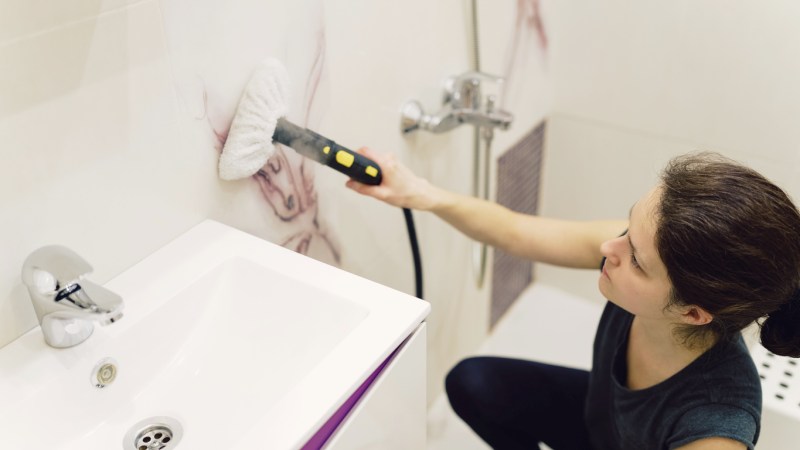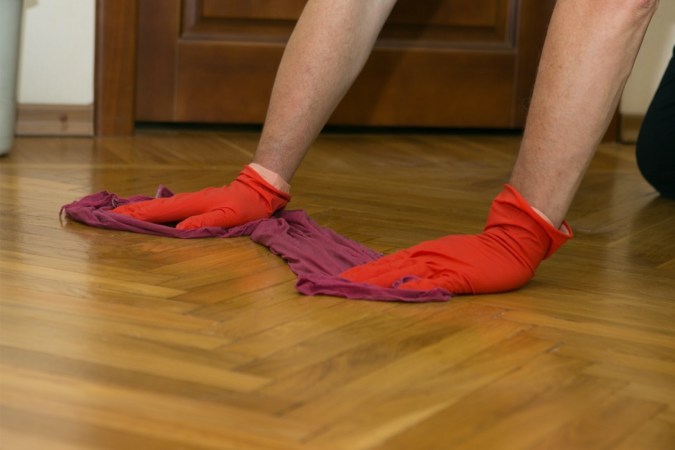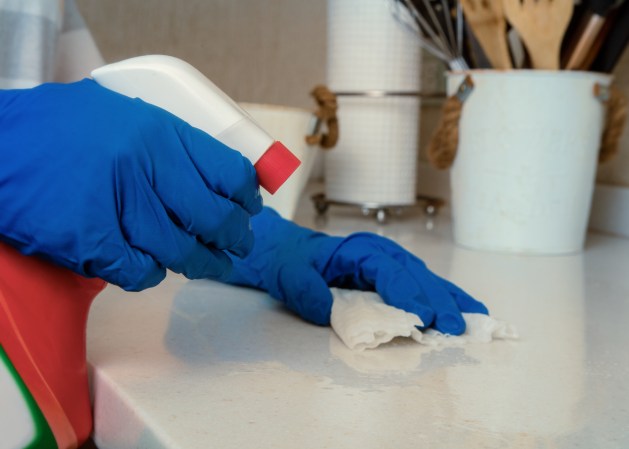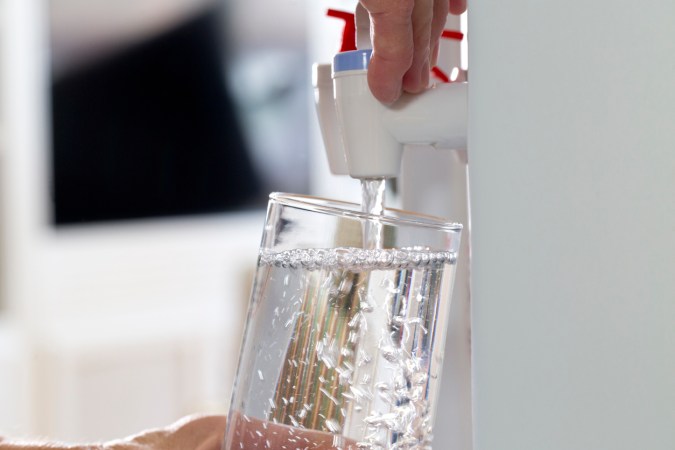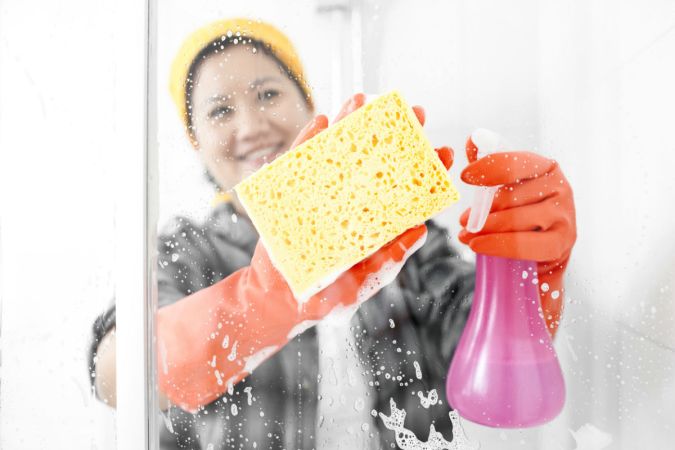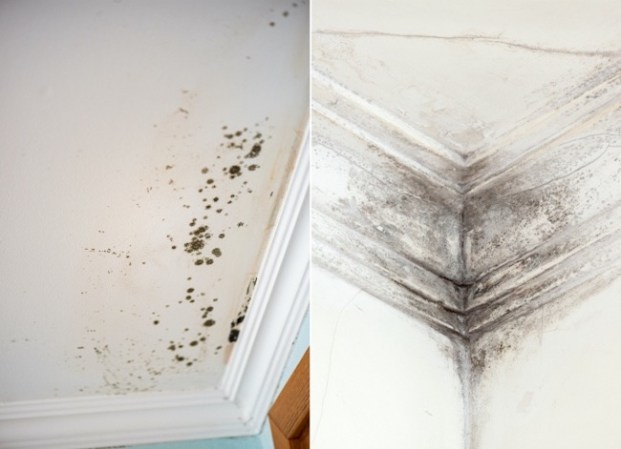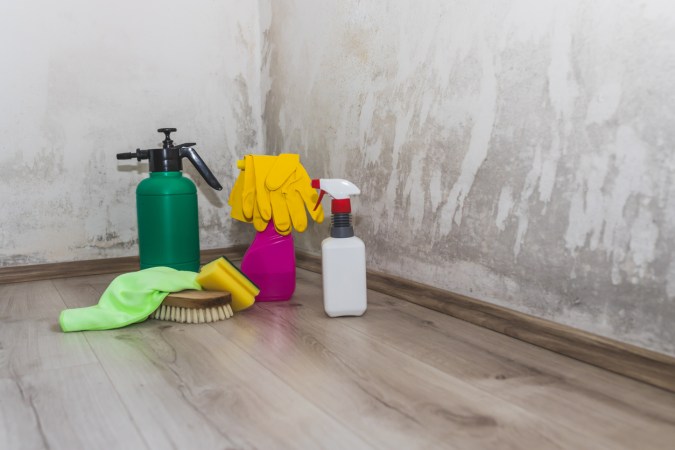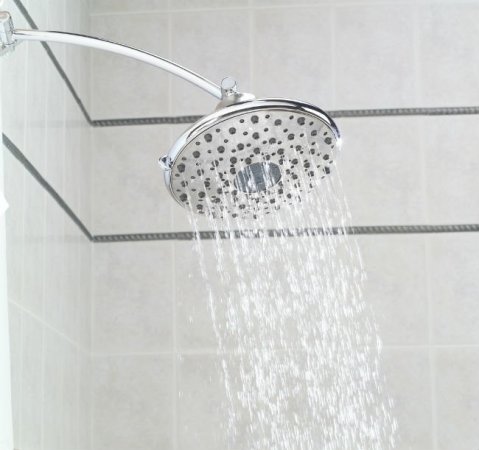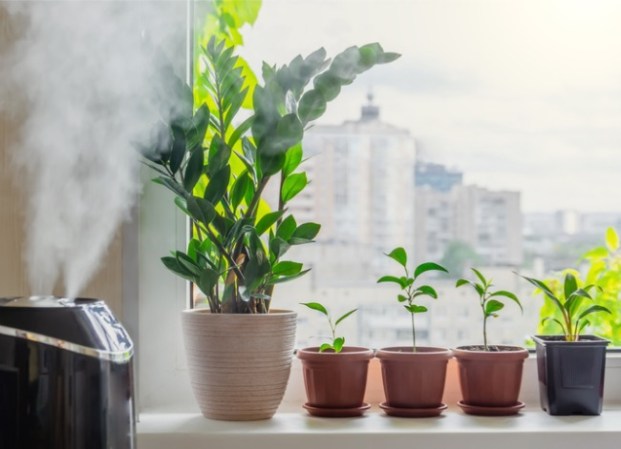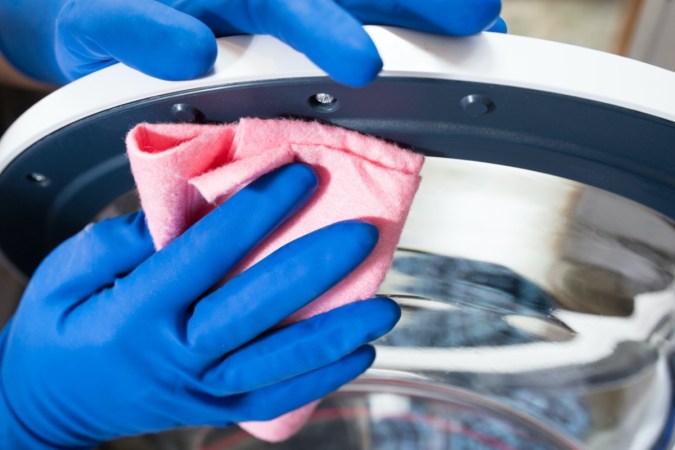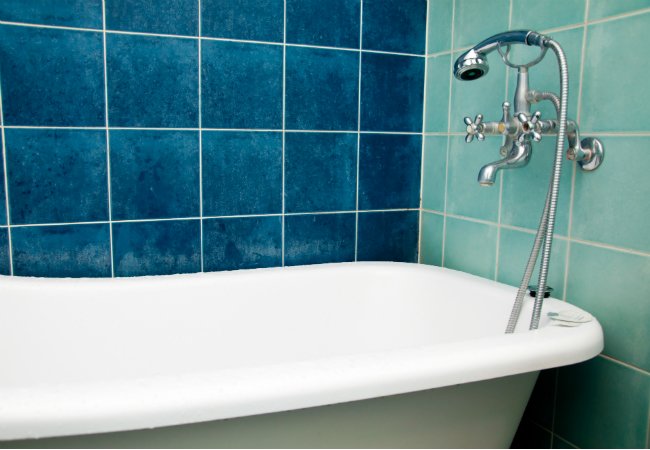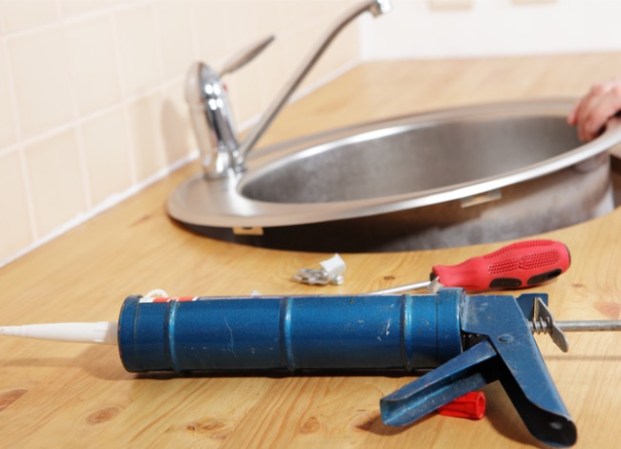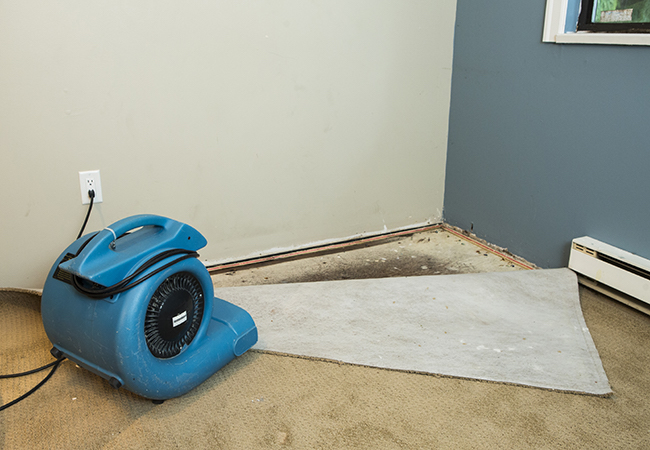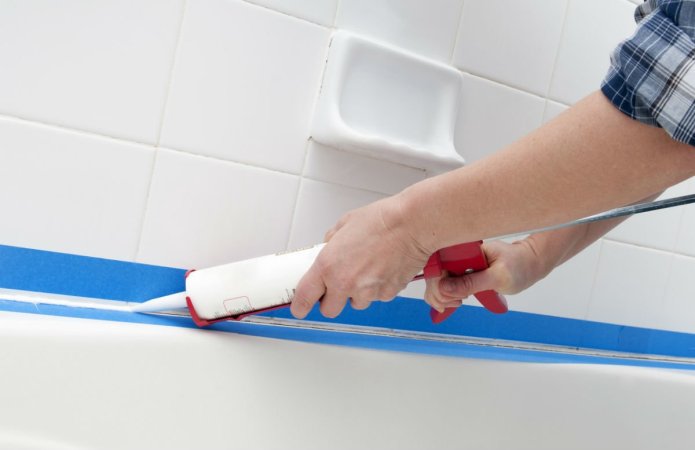We may earn revenue from the products available on this page and participate in affiliate programs. Learn More ›
Q: As I was cleaning my bathroom, I saw that I had pink grout that I had never noticed before. It seems to be some sort of slimy buildup. Now I’m worried. What is pink mold doing in my shower, what causes it, and how do I get rid of it?
A: Unlike run-of-the-mill green molds like Cladosporium or the infamous toxic black mold, Stachybotrys chartarum, the pink staining in shower areas isn’t actually mold at all. The discoloration comes from a biofilm—specifically, a bacterial colony of Serratia marcescens. Still, even though it’s not actually mold, it’s commonly referred to as pink mold.
Is pink mold dangerous or harmful?
While pink mold is harmless to most healthy people whose skin may brush up against it in a narrow shower, it can cause various ailments (e.g., urinary tract or bladder infections) if it enters the body through the eyes or open wounds. The severity and variety of these ailments escalate in individuals with compromised immune systems. It’s better to be safe than sorry, so take steps to remove the pink bacteria in shower areas before they multiply and your family’s exposure increases.
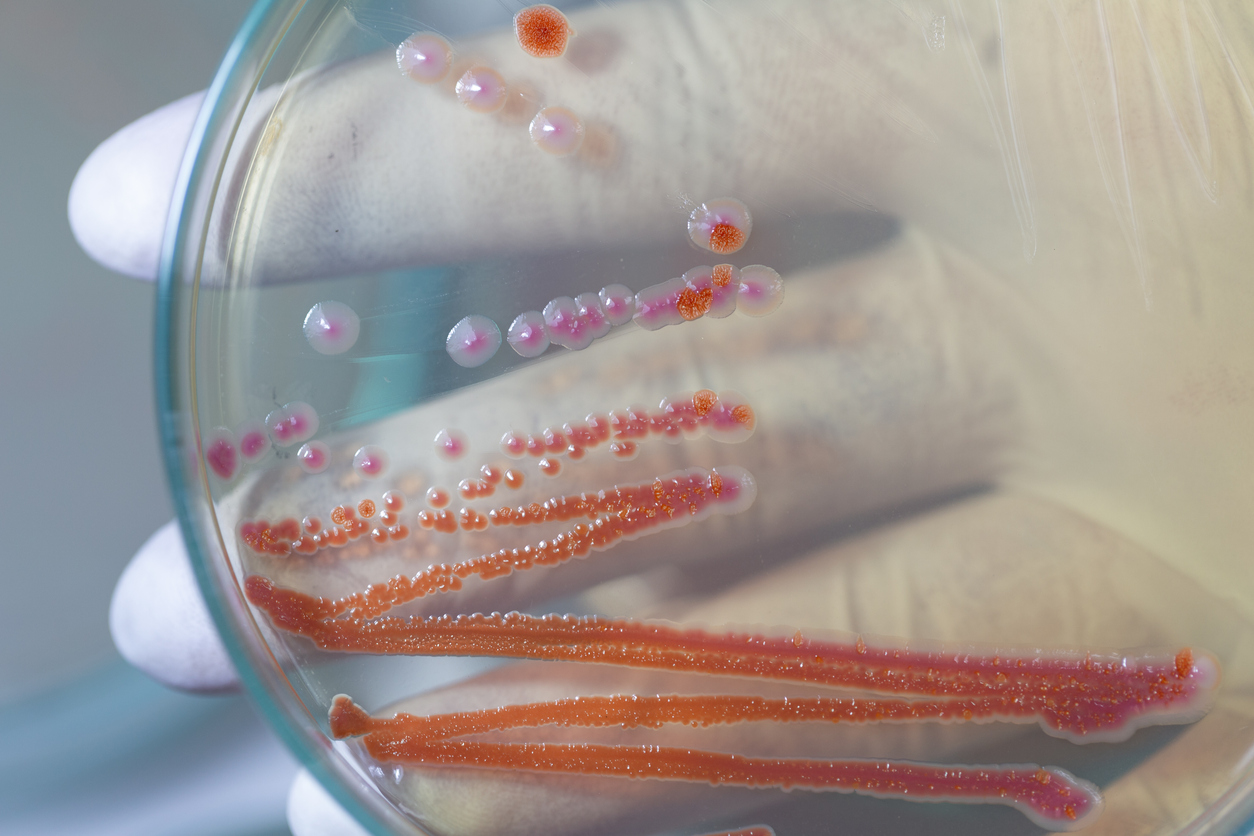
What causes pink mold in the shower?
S. marcescens is an airborne bacteria that thrives in warm, moist environments like showers, where it feeds on mineral deposits in soap scum and fatty deposits in soap and shampoo residue. Pink mold tends to grow where excess moisture collects—not just in the shower, but also in the toilet bowl, around the drain, on the shower curtain, and along the ledges surrounding the bathtub, especially in the corners.
How to Get Rid of Pink Mold in the Shower
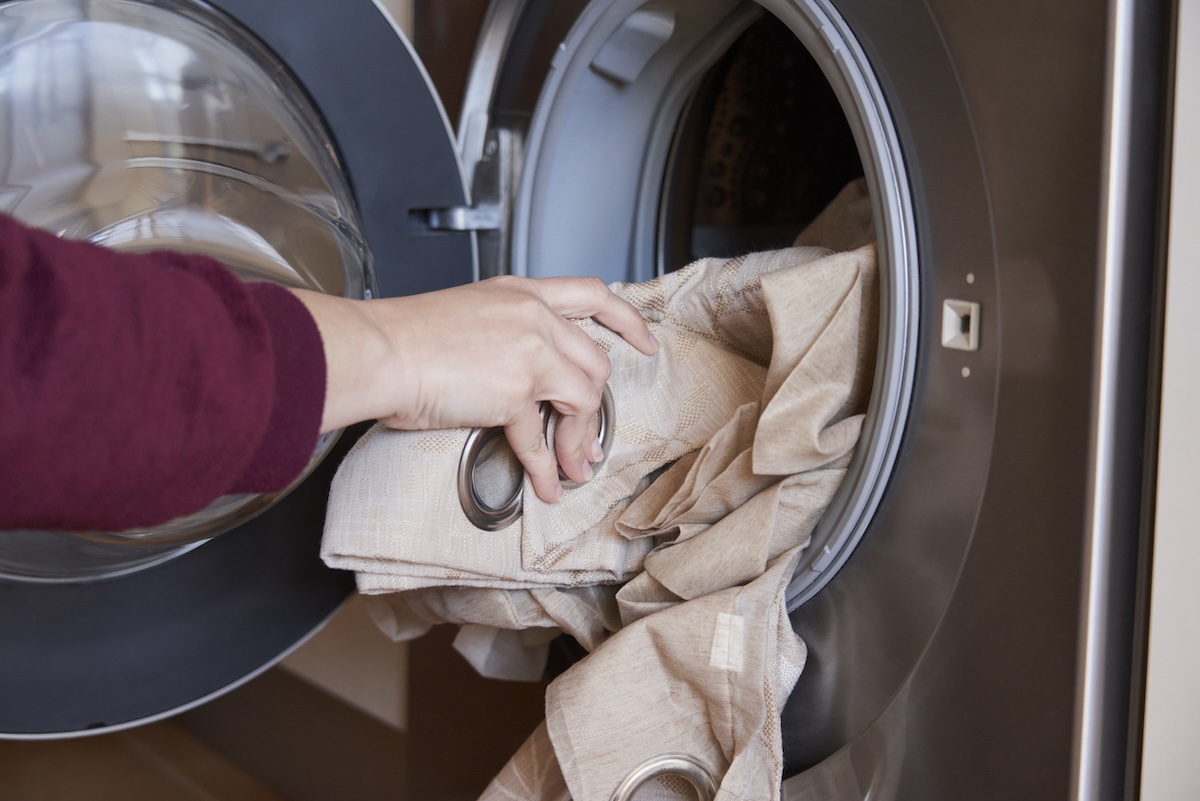
It’s not hard to get rid of Serratia marcescens, and thanks to its coloring, which ranges from light pink to dark red, it’s easy to spot. With basic household cleaners and the techniques outlined here, you can usually get rid of pink mold in bathtubs and on hard and soft shower surfaces fairly quickly.
Step 1: Put on protective gear, open windows, and turn on the exhaust fan.
Pink mold isn’t as dangerous as black mold, but it’s still a health hazard and it’s best to avoid direct contact with the stuff. Put on gloves, goggles, and a respirator mask to minimize exposure.
Step 2: Mix a cleaning solution.
Make a runny paste by combining ¼ cup baking soda and 1 tablespoon of liquid dish soap in a small bowl.
Step 3: Scrub with a brush, and then rinse or wipe.
Dip a soft-bristle scrub brush into the paste and vigorously scrub down any visible patches of biofilm on hard surfaces around the shower (e.g. shower chairs, doors, and tile and grout lines on walls and floors). This process should loosen and lift the biofilm.
When you’ve finished scrubbing, rinse away the loosened biofilm by either wiping down the scrubbed areas with a wet towel or using the shower head to flush the slime down the drain.
Step 4: Clean the shower curtain and liner.
If you don’t also clean the shower curtain and liner, pink mold from the curtain can spread back to the tub or shower. Remove the curtain and liner and wash according to the care labels. Let them air-dry completely in the sun before hanging them back up. If the liner is too moldy or worn out to save, buy a new one. Liners are inexpensive and not intended to last as long as the curtain.
Step 5: Disinfect surfaces.
Now that you’ve cleaned off the biofilm, it’s time to get rid of any remaining bacteria. Bleach is your best bet since it does double duty, killing off the last of the bacteria and dissolving stubborn stains.
- Pour 6 ounces each of chlorine bleach and warm water into a 12-ounce spray bottle, then replace the cap and gently shake the bottle.
- Spray the solution on the scrubbed surfaces and let it sit for 10 minutes.
- Use a soft-bristle scrub brush to lightly scrub down the sprayed areas, rinse once more, and dry the shower surfaces with a clean towel or squeegee.
How to Prevent Pink Mold in the Shower
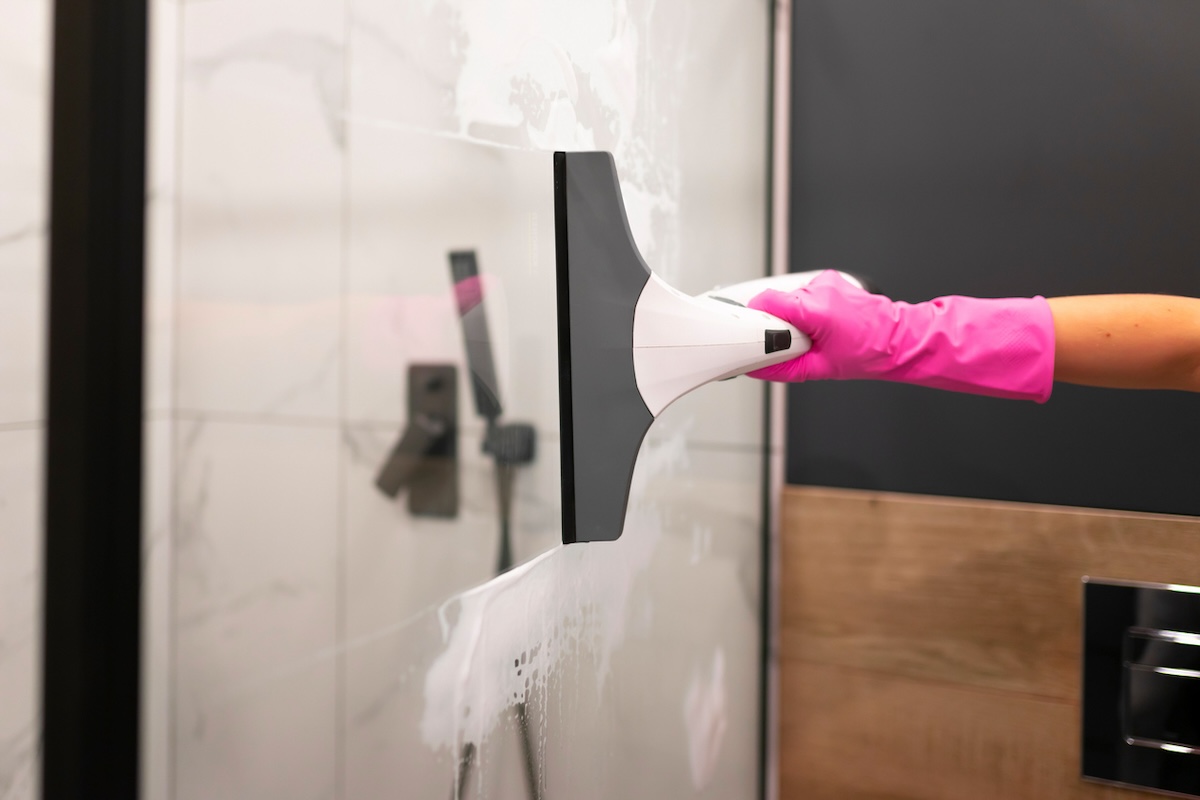
S. marcescens often reappears on hard and soft shower surfaces, even after you’ve taken measures to remove it. To prevent new biofilm from forming, stick to a cleaning regimen and take the following steps to control moisture.
- Towel-dry or squeegee the hard surfaces of your shower after every use to remove excess water.
- Use a damp paper towel or microfiber towel to wipe away soap or shampoo residue anywhere it collects in the shower. Make a second pass over these areas with a dry towel.
- Remove soap scum from hard shower surfaces at least every other week by spraying affected areas with a 50:50 solution of white vinegar and warm water combined with 1 tablespoon of dish soap. Let the solution sit for 15 minutes, and then scrub down with a soft-bristle brush. Rinse, and then towel-dry or squeegee the wet surfaces.
- To prevent pink mold on shower curtains, machine-wash the curtain every month, following the instructions on the care label. Wash or replace the liner as needed.
- Close the shower curtain and liner completely after use to help them dry out and prevent pink mold from forming in the damp folds.
- Repair leaking shower heads or faucets promptly to prevent moisture from collecting in the shower.
- Turn on the bathroom exhaust fan before you shower and leave it on for 20 minutes afterward to help dry out the room.
- Though it sounds counterintuitive, it’s best to keep bathroom windows closed while you shower to prevent airborne S. marcescens from wafting in from outdoors.
